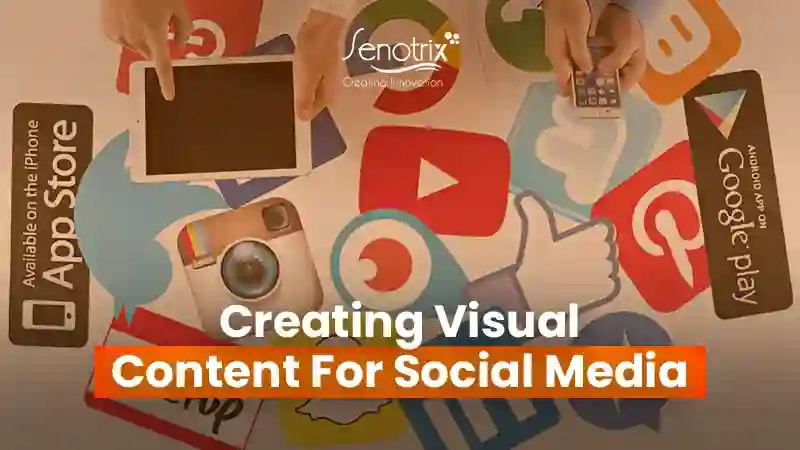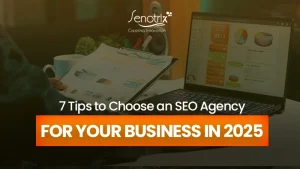In a competitive market creating compelling visual content is no longer optional. For businesses and individuals aiming to capture the attention of their audience, visual media content has become essential. Whether you’re a small business or a large corporation, your success hinges on how well you craft engaging, eye-catching content that stands out amidst the noise of social media.
But with so many platforms and types of visual content available, how do you know which direction to take? Which social media platform is best for visual content? How can you create visual content for social media that not only grabs attention but also boosts engagement and conversions? Let’s find out!
Why Visual Content Matters: The Emotional Impact
Imagine scrolling through your social media feed what catches your eye? It’s the bold images, dynamic videos, and interactive posts that stand out, right? This is the power of visual content. Visuals grab attention, evoke emotions, and are much easier to remember than text alone.
Research reveals that visual content significantly outperforms text-only posts, with posts featuring images receiving 650% higher engagement compared to text-only content. This means that if you’re not using visuals in your social media marketing, you’re missing out on a massive opportunity to engage your audience and improve your performance.
Importance of Visual Content in Social Media Marketing
Visual content is more than just pretty pictures. It’s a strategic tool used to communicate your message, values, and brand identity. Here’s why visual content for social media is crucial:
- Increased Engagement: People are more likely to engage with visual posts. Visual content on social media generates more interaction, with Facebook posts with images seeing 37% more engagement than those without.
- Boosted Brand Recognition: A consistent visual presence helps your audience recognise your brand. When you use a consistent colour scheme and style, you build familiarity, making your content more memorable.
- Improved Conversion Rates: If you’re looking to convert followers into customers, visual media content can play a pivotal role. People are more likely to take action when a visual component is involved, whether it’s clicking on a product link or signing up for a newsletter.
- Better Information Retention: Visual content makes it easier for people to remember information. It’s estimated that people remember 65% of the information they see, compared to just 10% of what they read.
Types of Visual Content
When we talk about creating visual content, there’s more to it than just using photos. There’s a wide range of visual formats, each serving a specific purpose and achieving different outcomes. Here’s a look at the most effective types of visual content for social media:
- Images: Photos and graphics are the bread and butter of visual content. They can evoke emotions, set a mood, or convey a message in an instant. Posts with visuals receive more views than those without, making them essential for your content strategy.
- Videos: Video content has become the dominant force in social media marketing. It allows you to demonstrate products, tell stories, and connect with your audience in a more dynamic way.
- Infographics: These combine visual elements with data to make complex information more digestible. Infographics can be used to summarise blog posts, share statistics, or explain concepts in a visually engaging format.
- Memes and GIFs: Lighthearted, funny, or emotional, memes and GIFs are incredibly shareable and can help humanise your brand. They’re perfect for quick engagement and can go viral.
- User-Generated Content: Showcasing your followers’ content is a great way to build trust and community. It’s also an excellent way to demonstrate how your products or services are being used in the real world.
Which Social Media Platform is Best for Visual Content?
Not all platforms are created equal when it comes to social media visual content. Each platform has its own strengths, and understanding which is best suited to your content is key to maximising engagement.
Instagram: The King of Visual Content
With its focus on imagery, Instagram is undeniably the best platform for visual content. It’s the go-to platform for businesses and influencers looking to engage their audience through high-quality images and videos. From stories to posts to IGTV, Instagram offers a variety of ways to showcase your brand visually.
- Why it works: Instagram’s audience is visually driven, and the platform’s algorithm favours posts with high engagement, making visual content a must.
- Tips: Use high-quality images, create a consistent style, and take advantage of Instagram’s video features like Reels.
Pinterest: A Visual Discovery Engine
Pinterest may not have the same active user count as other platforms, but it’s a powerful tool for visual content. It functions as a discovery engine, with users searching for inspiration through images and videos.
- Why it works: Pinterest is perfect for businesses in industries like fashion, home decor, and food that rely on visuals to attract their audience.
- Tips: Optimise your pins for search, use vertical images, and create infographics that provide value to users.
Facebook: A Balanced Approach
While Facebook isn’t as visual-focused as Instagram or Pinterest, it still holds a significant place in the world of visual media content. Images and videos posted on Facebook are shared frequently, allowing your content to reach a wider audience.
- Why it works: Facebook’s diverse audience makes it a great platform for sharing various types of visual content, from images to videos to live streams.
- Tips: Combine visuals with strong calls to action, and use live videos to connect with your audience in real-time.
TikTok: The Video Giant
TikTok has quickly become the go-to platform for video content. If you’re looking to create social media visual content that grabs attention and goes viral, this is the platform for you.
- Why it works: TikTok’s algorithm favours creative, engaging videos, which makes it ideal for businesses looking to capitalise on trends.
- Tips: Focus on creating short, punchy videos that capture attention in the first few seconds, and leverage trending sounds and challenges.
Create Visual Content for Social Media
Now that you understand the importance of visual content for social media and which platforms work best for it, how do you go about creating visual content that actually resonates with your audience? If you are thinking about how to create visual content for social media? Here are some best practices to keep in mind:
- Consistency is Key: Ensure your visuals align with your brand’s identity. From colour schemes to fonts, consistency will help your audience immediately recognise your content.
- Use High-Quality Images and Videos: Blurry or pixelated visuals can damage your credibility. Invest in good-quality visuals that look professional and polished.
- Tailor Content to Each Platform: Not all platforms work the same way. Optimise your content for the specific format and audience of each platform. For example, Instagram thrives on high-quality photos, while Twitter is better suited for eye-catching GIFs.
- Leverage Video: Videos are the most engaging form of content on social media. Experiment with short-form videos, live streams, and stories to capture your audience’s attention.
- Tell a Story: People love stories. Use your visuals to tell a compelling narrative that resonates with your audience emotionally.
Measuring the Impact of Visual Content
Creating visual content is only part of the equation. To know if your efforts are paying off, you need to measure the impact of your content. Here are some key metrics to track:
- Engagement: Track likes, comments, and shares to see how well your content is resonating.
- Reach and Impressions: Measure how far your content is spreading and how many people are seeing it.
- Conversion Rates: Are your visuals leading to website clicks or sales? Track your conversion rates to measure the effectiveness of your content.
- Video Views: For platforms like YouTube and TikTok, video views are a crucial metric to track.
Takeaway
Creating visual content for social media is no longer optional as it’s a necessity. From images and videos to infographics and user-generated content, your visual strategy should be carefully crafted to resonate with your audience. By understanding the importance of visual content, knowing which platform works best, and following best practices, you can take your social media game to the next level. Your digital presence deserves more than template strategies.
Senotrix brings enterprise-level marketing intelligence to growing businesses. Book a strategy session to see how our data-first approach consistently outperforms industry benchmarks.
Learn More: Digital PR – The Game-Changer for Modern Brands
Author Profile

- Wahab Saleem
- Senotrix Ltd is a UK-based SEO and digital marketing agency helping fast-growing brands boost visibility, traffic, and ROI through data-driven strategies.
Latest entries
 SEOAugust 19, 2025Answer Engine Optimisation: Ways To Master bb In 2025
SEOAugust 19, 2025Answer Engine Optimisation: Ways To Master bb In 2025 SEOAugust 19, 20257 Tips to Choose an SEO Agency for Your Business in 2025
SEOAugust 19, 20257 Tips to Choose an SEO Agency for Your Business in 2025 SEOAugust 19, 2025How to Choose an SEO Company in 2025?
SEOAugust 19, 2025How to Choose an SEO Company in 2025? SEOAugust 19, 20257 Qualities of a Great SEO Company: A Complete Guide
SEOAugust 19, 20257 Qualities of a Great SEO Company: A Complete Guide




